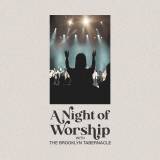SOUND EQUALIZATION

EQUALIZATION
[For an equalization post as it pertains to Front of House, check out Fox’s EQ article in the F.O.H. 101 series.] Our ears tend to like mid-rangy sounds. The human voice is in the middle of the audible spectrum and due to that, we favor those tones. One of the mistakes beginning mixers make is to listen to each instrument outside of the mix (soloed) and adjust it so that it sounds good. We get it perfectly balanced and natural sounding. Usually, this means that the mid range areas are pronounced. The “curve” looks like a gentle hill. (see image).
Gentle Mids EQ Curve

Accumulated Mids
To make great mixes, we need to learn EQ correctly.
FILTERS

Filter EQ

There are two other common types of EQ. The filter (described above), a shelving EQ and a peak EQ. The shelving EQ looks a bit like, well, a shelf. It allows you to set a frequency and the either cut or boost all the frequencies before or after it.

Shelving EQ

Peak EQ

Adjustable Q
So how does all this talk get us to a better personal mix?
The goal of a good personal mix is for you to hear what you need to hear to perform your best. We have already talked about how to mix only the key instruments or vocals that you need to play your best. Now we are talking about applying some shaping to each of those instruments so that they have their own place in the mix.Each instrument will have fundamental frequencies and harmonics. The fundamental frequencies are those that are generated by the note(s) you play. Harmonics are all the other frequencies generated from the instrument as a result of that note being played. That is a simplification but it will work for this discussion.
For example, your typical acoustic guitar will have a fundamental frequency range of 82Hz to 1.2kHz. A bass guitar ranges from 41Hz to 343Hz. There is some overlap in those ranges. By reducing the acoustic guitar at around 200Hz, you have now created a place for the bass to live. And when we think about it in musical terms, the bass is often playing the root of the chords, which is often what is played on the low E-string on an acoustic. So you are not losing any “information”. This is what we would call “sitting in the mix.”
Each instrument or performer also exhibits certain characteristics at certain frequencies as a result of the harmonic frequencies. Some of these characteristics are desirable and some are less so. For example, breathiness in voices happens above 10kHz. Generally, we don’t need that characteristic in our personal mixes. The frequencies between 2-4kHz help us understand what is being sung, so that is rather important. So we can cut some of those higher frequencies and leave the 2-4Khz untouched, or even with a slight boost.
Try to resist the tendency to listen to the channels by themselves. The bass for example will feel like it needs more highs. At first, it will take everything you have not to boost that upper end of the range. Trust the process here. You will also find that you don’t need to have the volume up as high because you have spread out the mix energy across the spectrum. When the bass competes with a vocal, your monitors are working to reproduce sound that just isn’t necessary.
As you can see, EQ can be a complex topic
with a lot of stuff to know. For the volunteer performer, this is all a
bit much. How can we make it simple?
● Place a High Pass Filter on
(nearly) every channel to reduce unwanted low end and to keep that
“space” clear for the bassier instruments.
● Cut the high end from your bass instruments. Yield those frequency ranges to the instruments and vocals that need them.
● Don’t boost the same frequencies on multiple channels. Give everything its own address in the mix
SOUND EQUALIZATION
 Reviewed by Admin
on
10:30:00 AM
Rating:
Reviewed by Admin
on
10:30:00 AM
Rating:
 Reviewed by Admin
on
10:30:00 AM
Rating:
Reviewed by Admin
on
10:30:00 AM
Rating:
















Post a Comment